As the leaves change and the air cools, the excitement of Halloween brings a flurry of pumpkin carving and festive décor. The season, rich in tradition, often leaves us with the question: What do we do with our pumpkins once the celebrations are over?
Composting pumpkins is a simple and impactful answer. By choosing to compost, we engage in a practice that significantly reduces waste, enriches the soil in our gardens, and embodies the essence of sustainability.
Each year, millions of pounds of pumpkins end up in landfills where they contribute to methane emissions—a potent greenhouse gas. This is where the importance of recycling Halloween pumpkins becomes clear.
We have the power to alter this pattern, transforming what would be waste into a resource through pumpkin composting methods.
Through my own composting experiences, I’ve seen my garden flourish by simply adding composted pumpkins to the mix. I’ll share with you not only how to enrich your garden beds with pumpkin compost but also ways to make your Halloween greener.
Whether you’re a seasoned composter or someone looking to start, recycling your Halloween pumpkins is a step towards a healthier environment and a more sustainable future.
- Related Article: Guide to Things You Can Compost
Pumpkin Composting Guide Key Takeaways
- Composting Reduces Waste: Composting pumpkins after Halloween diverts organic waste from landfills, reducing methane emissions, and supports a sustainable lifecycle for seasonal produce by transforming them into nutrient-rich soil.
- The Science of Decomposition: Pumpkins are a rich source of nitrogen, which aids microorganisms in breaking down organic matter. Smaller pieces decompose faster, so cutting up your pumpkins can hasten this process. Balancing this with carbon-rich materials is essential for a healthy compost pile.
- Nutritional Benefits for Soil: Pumpkins provide compost with nitrogen, potassium, and phosphorus, which are vital for plant growth, root development, and disease resistance. Incorporating pumpkins into compost enriches the soil and promotes a more productive garden.
- Diverse Composting Methods: Traditional composting, vermicomposting with worms, and Bokashi composting for indoor spaces are effective ways to recycle pumpkins. These methods contribute to a sustainable garden ecosystem by repurposing organic waste.
- Step-by-Step Composting Guide: A successful pumpkin composting method includes removing non-compostable materials, cutting the pumpkin, mixing with ‘browns’ for balance, regularly turning the pile, maintaining moisture, and ultimately using the finished compost to nourish garden soil.
- Monitoring and Troubleshooting: Ensure your compost pile is warm, has a crumbly texture, and smells earthy for optimal health. Address common issues like pests, odors, and slow decomposition by adjusting the green-to-brown ratio, aerating the pile, or adding more ‘green’ material as needed.
- Sustainable Post-Halloween Practices: Besides composting, consider feeding wildlife with your leftover pumpkins or using them as planters to give them a second life. Sustainable practices not only minimize waste but also contribute to the health of your garden and local ecosystems.
The Science Behind Pumpkin Composting
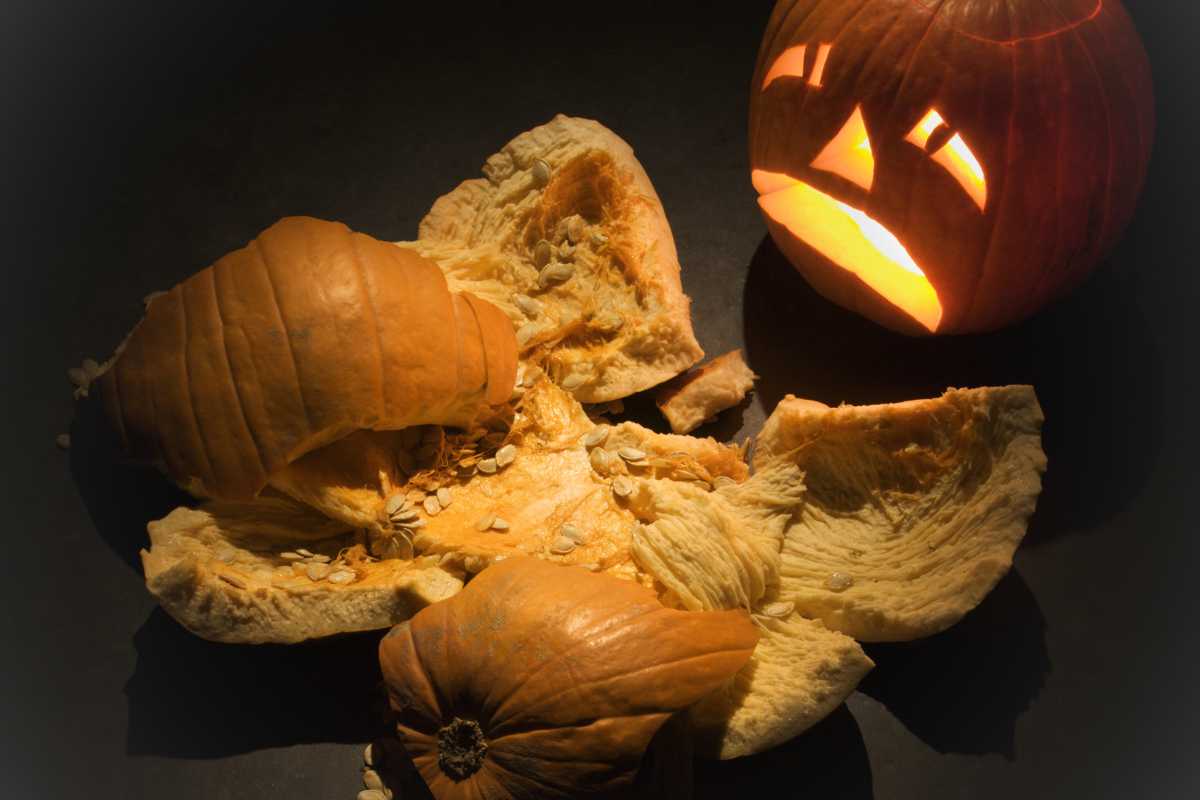
Composting your Halloween pumpkin is not just an eco-friendly gesture; it’s a fascinating process steeped in science.
When you toss your jack-o’-lantern into the compost, you’re adding a rich source of nitrogen – a key component that microorganisms need to thrive. These tiny decomposers, including bacteria and fungi, get to work right away, breaking down the soft tissues of the pumpkin. As they consume the pumpkin, they’re converting it into more accessible nutrients for your plants.
The hard outer shell, or the rind, takes a bit longer to decompose. To speed up the process, before you compost, chop your pumpkin into smaller pieces. The increased surface area gives microorganisms easier access and accelerates decomposition.
You’ll know they’re doing their job when you see the material in your compost pile shrink and feel it heat up – that’s the magic of microbial activity!
Now, let’s not overlook carbon – the other vital ingredient for successful composting. Balance your pumpkin’s nitrogen with carbon-rich materials, like dried leaves or shredded paper. This combination is what seasoned composters refer to as ‘greens’ and ‘browns’, a dynamic duo in the composting world.
Composting pumpkins is more than just tossing leftovers; it’s an intentional process that nurtures the circle of life in your garden.
By integrating these science-backed practices into your composting routine, you’re setting the stage for a nutrient-rich amendment that will enhance your soil and bolster your garden’s health.
Step-by-Step Guide: How to Compost Pumpkins
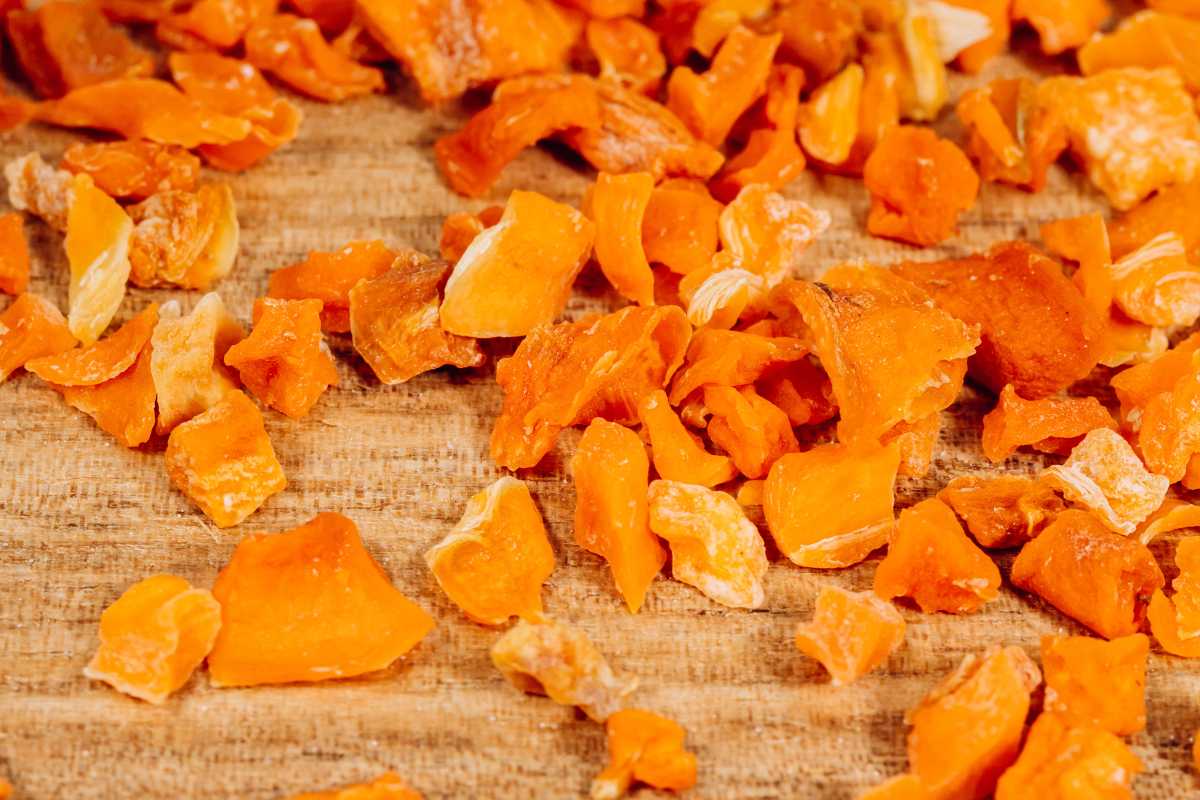
Here’s a simple and straightforward guide to turn those pumpkins into nourishing compost for your garden.
- Remove all non-compostable materials: Before you begin, make sure to take out any candles, stickers, or non-biodegradable decorations from your pumpkins. Ink and adhesives can introduce toxins to your compost, so it’s best to remove them entirely.
- Cut the pumpkin into smaller pieces: Breaking down your pumpkin into smaller chunks accelerates the composting process. I’ve found that using a sturdy knife works well for this. For larger and thicker pumpkins, a hand saw can be helpful. And if you want more fun, take a baseball bat and start smashing the pumpkins into little pieces! Just be careful and keep those fingers safe!
- Mix with the right materials: Your compost pile should be a balanced mix of greens and browns—pumpkin is a green. Balance it out by adding browns like dry leaves, straw, or shredded newspaper. This will help create the optimal environment for decomposition.
- Turn the pile regularly: To get that compost cooking, turn your pile every week or two with a garden fork. This introduces oxygen, which is crucial for breaking down organic material. Trust me, your plants will thank you later for this extra bit of effort.
- Keep the pile moist, but not wet: Think of your compost like a wrung-out sponge—damp but not dripping. During dry spells, I give mine a quick sprinkle to maintain the moisture level. However, if you’re seeing a lot of rain, cover the pile to prevent it from getting too soggy.
- Wait for the magic to happen: Patience is key. Over time, those pumpkin pieces will break down into dark, rich compost. It could take a few months depending on your composting method, but when you see that transformation, it’s a rewarding moment.
- Use your pumpkin compost: Once your compost is ready, it’s time to feed your garden. Mix it into your soil to enrich it with nutrients, or use it as a top dressing for your beds and containers.
Remember, composting your pumpkins not only reduces waste but also enriches your garden, creating a sustainable cycle that benefits your little slice of nature.
If you need additional composting tips, check out our helpful composting resources, like our comprehensive Start Composting Guide.
Quick Checklist:
- Remove inorganic materials and cut the pumpkin into smaller pieces.
- Balance your green pumpkin with brown materials.
- Layer your greens and browns in the compost bin.
- Ensure the pile has the right moisture level.
- Regularly turn the pile to incorporate air.
Monitoring and Troubleshooting the Composting Process
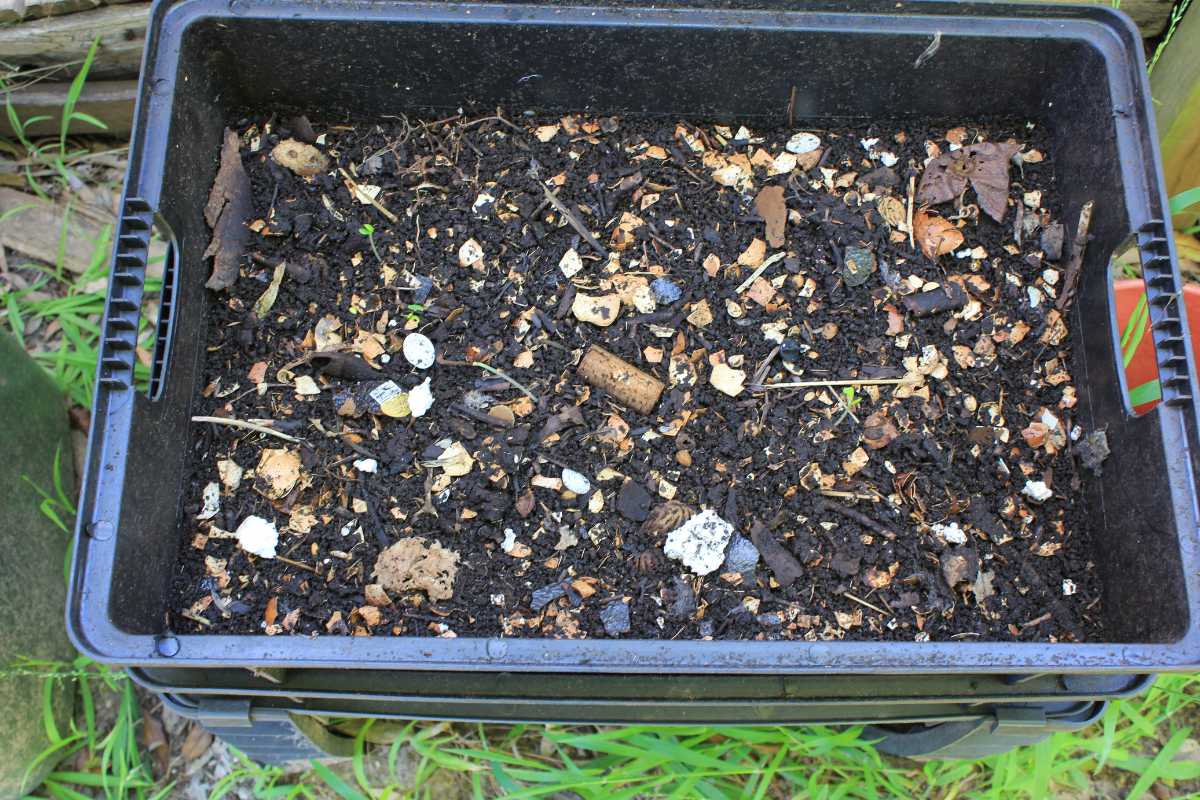
Let’s walk through the vital signs that your pumpkin compost is thriving and tackle common hiccups you might encounter along the way.
Vital Signs of a Healthy Compost Pile:
- Temperature: Your compost should feel warm as the breakdown process generates heat. If it’s cool, give it a stir to reactivate the decomposition.
- Texture: Look for a crumbly texture, much like rich garden soil. If your compost is too wet or clumpy, add dry, brown materials like leaves or straw to balance moisture.
- Smell: A pleasant, earthy aroma indicates all is well. Any foul odors suggest an imbalance, often remedied by aerating the pile or adjusting the green-to-brown ratio.
Common Composting Challenges:
- Pests: If critters start visiting, your compost may be too accessible. Use a bin with a lid and ensure that you’re burying food scraps, like pumpkin guts, under other compost material.
- Odor: Bad smells often mean excess moisture or not enough air. Turn your pile to introduce oxygen and add brown materials to soak up excess moisture.
- Slow Decomposition: Pumpkins usually break down quickly; if not, they may need more nitrogen-rich “green” material, like grass clippings, to heat up the pile.
Keep an eye on these indicators, and you’ll have a thriving compost pile that turns your Halloween pumpkins into nutrient-rich gold for your garden. If you run into issues, adjust accordingly, and your compost will be back on track in no time.
Other Pumpkin Composting Methods
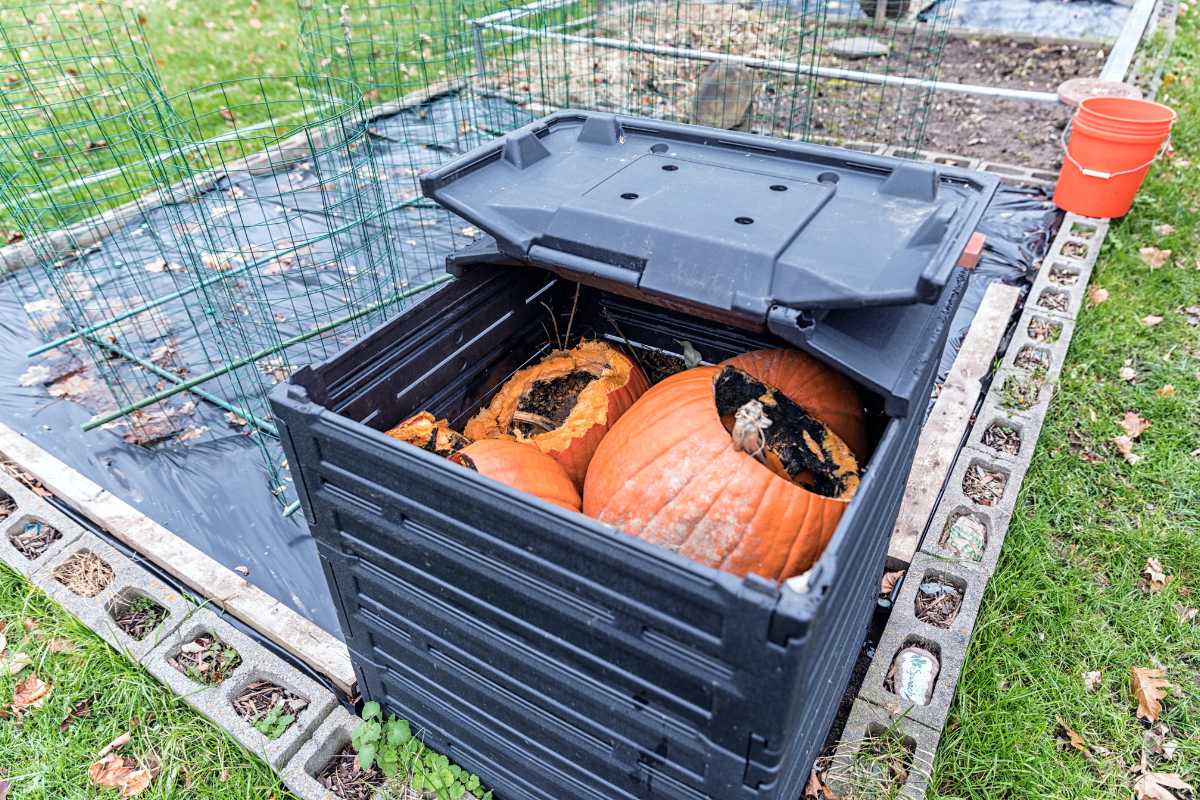
Let’s explore a few sustainable methods to recycle your pumpkin and give back to Mother Earth.
1. Traditional Composting
Traditional composting is the most popular and efficient method for recycling pumpkins.
Start by chopping your pumpkin into smaller chunks. This increases the surface area for microorganisms to work their magic and speeds up the composting process. Remove any candles, artificial lighting, or non-organic decorations.
Bury these chunks under your existing compost material to discourage pests. Over time, the pumpkin will break down and contribute to a nutrient-rich compost that your garden will thank you for.
2. Vermicomposting
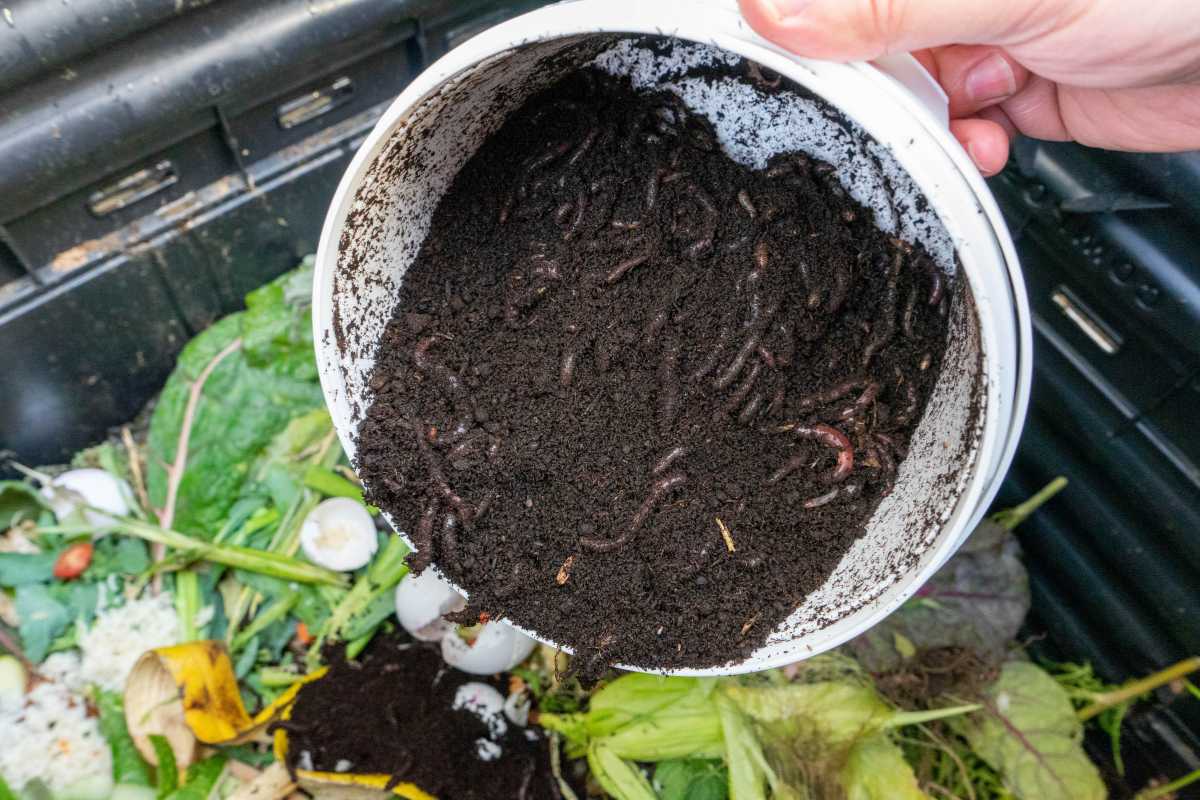
Worms are nature’s little recyclers and they love pumpkin as much as we do. Cut the pumpkin into smaller pieces for the worms and remember to remove any seeds to prevent unintended pumpkin plants.
Feed the pieces to your worm bin a bit at a time. The worms will efficiently break down the pumpkin into vermicompost, a superfood for your plants.
3. Bokashi Composting
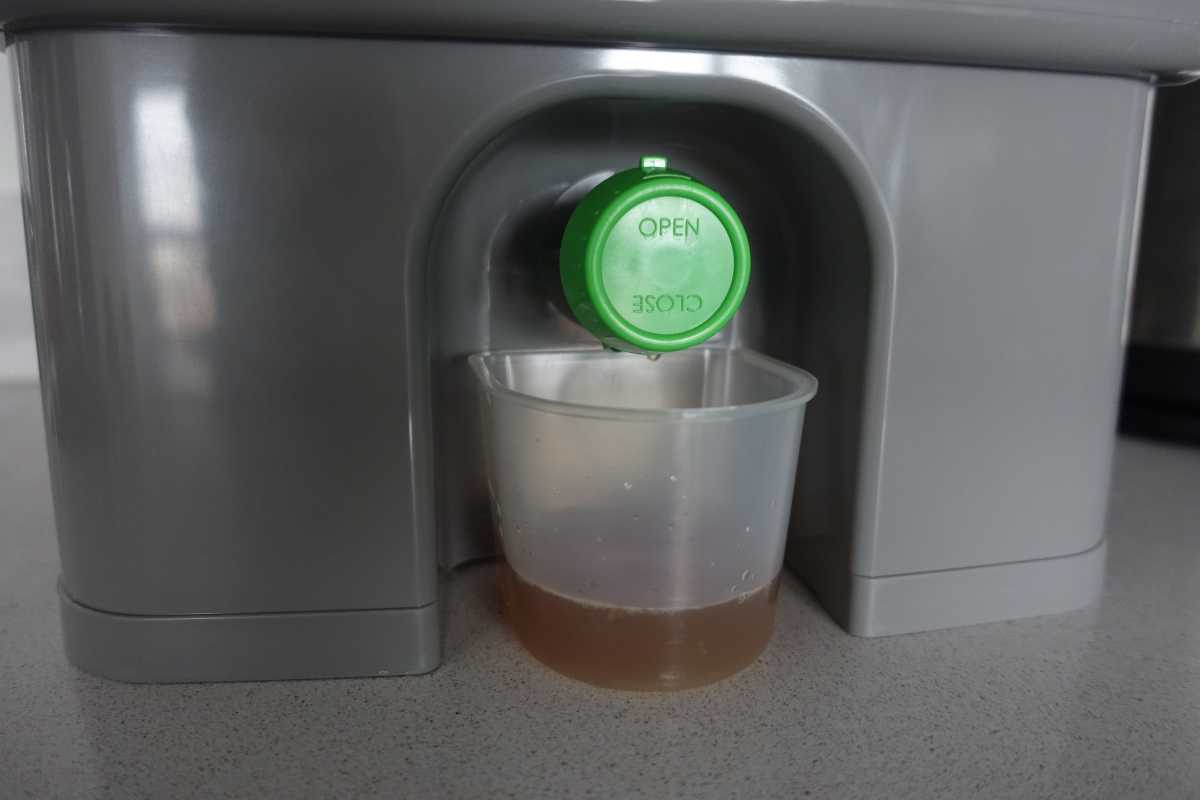
This method is perfect for those of you who might not have outdoor space. Bokashi composting is a fermentation process that can be done right in your kitchen.
Start with a Bokashi bin and mix your pumpkin pieces with Bokashi bran. Seal it tight and let it ferment.
The result? A pre-compost mixture that can be buried in your garden or added to your outdoor compost bin to finish decomposing.
Other Sustainable Ways to Use Leftover Pumpkins
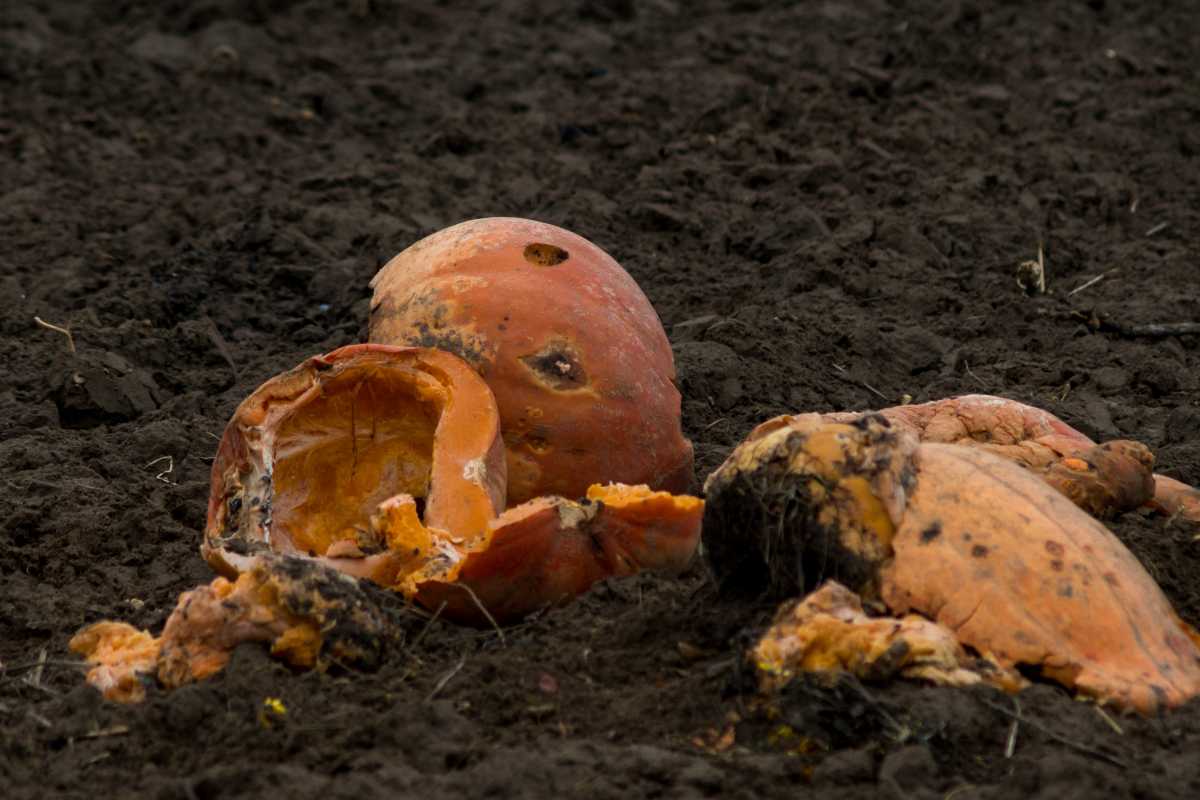
What else can you do with your decorative gourds besides composting? Let’s talk about how to give your leftover pumpkins a sustainable second act.
1. Feed the Wildlife
Your jack-o’-lantern can serve as a tasty treat for wildlife. Birds and squirrels, in particular, enjoy pumpkin seeds.
Cut the pumpkin into halves and place it in your yard away from your home to avoid unwanted critters near your living space.
Watching the animals enjoy your pumpkin can be a delightful bonus!
2. Plant Pumpkin Seeds
Why not grow your own pumpkins for next year? Clean and save the seeds from your pumpkin. Dry them thoroughly, and store them in a cool, dry place.
Come spring, plant them in your garden and nurture your very own pumpkin patch.
3. Create a Pumpkin Bird Feeder
Get crafty and turn your pumpkin into a bird feeder. All you need to do is hollow out the pumpkin, create holes to attach string for hanging, and fill it with birdseed.
Hang it from a tree and enjoy the flurry of feathered visitors.
4. Make a Pumpkin Planter
If you’re a plant enthusiast, consider using your pumpkin as a natural planter. Fill it with soil and autumn-friendly plants such as mums or pansies.
Once the pumpkin starts to decompose, you can plant it directly into the ground, and the pumpkin will continue to nourish the soil and your plants.
Here are some quick steps for making a compostable pumpkin planter:
- Cut the top off and hollow out the pumpkin.
- Poke a few drainage holes in the bottom.
- Fill with potting soil and your choice of plants.
- When ready, plant the entire pumpkin in your garden.
Incorporating these sustainable practices not only enriches your garden but also helps you contribute to a healthier planet.
I’ve found these methods to be a delightful way to extend the life of my seasonal decorations while also giving back to the earth.
Final Thoughts on Composting Halloween Pumpkins
As we tuck away our Halloween festivities, your pumpkins can embark on a remarkable transformation from festive decor to garden benefactor. By mindfully composting, you not only embrace an eco-friendly practice, but you also invigorate your soil with a trove of nutrients essential for a thriving garden.
This cycle of renewal is not just a boon for your own patch of green but a step towards reducing the collective carbon footprint of seasonal celebrations.
It’s a simple act, chopping up and composting your gourds, yet it’s an assertion of your commitment to sustainability and a testimony to how small actions can lead to significant environmental benefits.
Happy composting, and may your garden glow with the legacy of your recycled pumpkins.
Here are some other articles on things you can compost:

